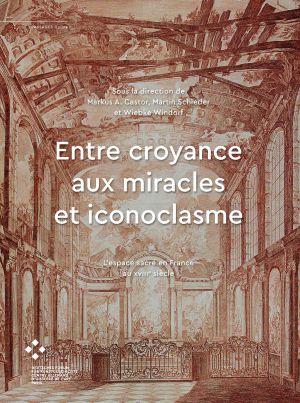
How to Cite
License

This work is licensed under a Creative Commons Attribution-ShareAlike 4.0 International License.
Identifiers
Published
Entre croyance aux miracle et iconoclasme
L’espace sacré en France au XVIIIe siècle
This conference volume examines the evidence, religious experiences and aesthetic transformations of sacred space in the Age of Enlightenment from an inter- and transdisciplinary perspective. To what extent should we understand the church in the 18th century not only as a sacred space, but also as a place that attracts believers and tourists, clergy and artists, nobles and citizens, men and women alike, and at the same time has a social, aesthetic and emotional dimension? How can we explain the fundamental secularisation and the dissolution of boundaries that affected the sacred space between the death of Louis XIV and the French Revolution? How is the question of the credibility of transcendence dealt with in the age of the emerging natural sciences, encyclopaedias and the progress of knowledge in art? Against the background of the confrontation between criticism of the church and absolutism, atheism, demystification of the religious and plausible reactualisation of the spiritual, (syn)aesthetic concepts of sacred spaces are of particular relevance. Not only integrated into art-theoretical discourses, they are a tangible expression of the continuous readjustment of Enlightenment society.






